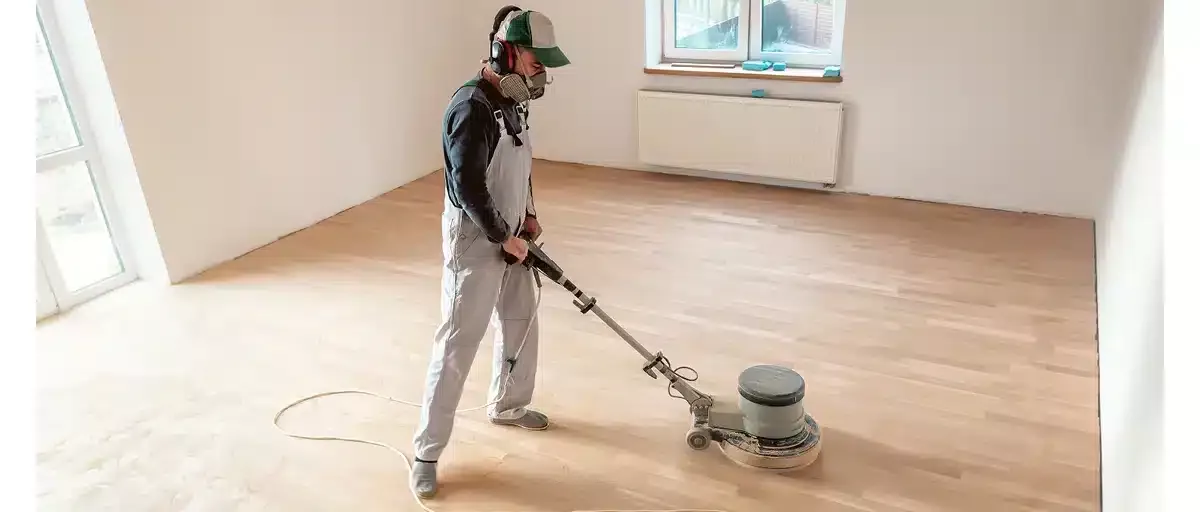Wooden floors are one of the most desirable features in a home—warm, stylish, and full of character. After investing in a professional sanding and finishing service, your floors probably look brand new. Whether you’ve opted for a lacquered or oiled finish, proper aftercare is essential to keep them looking beautiful for years to come. Working with a reputable local floor sanding company is the first step, but maintaining those floors is where your role begins. With the right care routine, you can extend the life of your floor’s finish, protect the wood underneath, and maintain that stunning, just-restored appearance.
Understand the Type of Finish You Have
Before you start any maintenance routine, it’s important to know whether your floors have been finished with lacquer (also known as varnish or polyurethane) or oil. Lacquer sits on the surface and creates a hard, protective layer, while oil penetrates the wood, enhancing its natural grain and offering a more matte, organic appearance. Each finish requires different care techniques, so be sure to confirm this with your reputable, local floor sanding company before beginning your maintenance routine.
Daily Care: Keep Dust and Grit at Bay
One of the easiest and most effective ways to maintain your wooden floors is daily dusting or sweeping. Grit and fine particles act like sandpaper and can scratch the surface over time, especially with lacquered floors. Use a soft-bristled broom, microfiber mop, or vacuum cleaner with a hardwood-friendly attachment to keep your floors clean. For oiled floors, this step is even more important, as they don’t have the same hard surface barrier as lacquered floors and can wear down more quickly in high-traffic areas.
Weekly Cleaning with the Right Products
Weekly cleaning helps to remove sticky residues and deeper dirt that sweeping can’t reach. Use a damp mop—never wet—and only products that are specifically designed for your type of finish. Generic household cleaners can dull or damage the surface. Lacquered floors should be cleaned with a pH-neutral wood floor cleaner, while oiled floors benefit from special soap oils that clean while replenishing moisture in the wood. A reputable, local floor sanding company often recommends specific brands or products that are safe and effective, so it’s worth asking for a maintenance kit or instructions after your floors are restored.
Use Mats and Rugs to Prevent Wear
Strategic placement of mats and rugs can go a long way in preserving your newly restored floors. Entryways, hallways, and under furniture are high-risk areas for scratches and wear. Use non-slip rugs or felt-backed mats, and avoid rubber-backed ones as they can trap moisture or stain the floor. Also, consider using protective pads under furniture legs to avoid dents and scuffs. A reputable, local floor sanding company may even suggest specific brands or types of protective pads that won’t damage your finish.
Avoid Moisture and Spills
Wood and water are not friends. Wipe up any spills immediately, whether your floor is lacquered or oiled. Excess moisture can seep into joints and edges, causing warping or swelling. For oiled floors, prolonged exposure to water can also lift the oil and dull the surface. Never use steam cleaners or soaking wet mops, as they push water deep into the grain. Maintaining proper humidity levels (between 40%–60%) in your home also helps prevent wood movement due to dryness or excess moisture.
Re-oiling or Recoating When Needed
Unlike lacquered floors, which generally require full sanding when they wear down, oiled floors can be spot-treated and re-oiled periodically to maintain their resilience and look. This is a huge advantage for homeowners who want a low-maintenance but long-lasting option. For lacquered floors, recoating is also an option—but timing is key. A light screen and recoat before the finish wears through to the wood can extend the life of your floors and save you from needing another full restoration. Your reputable, local floor sanding company can advise on when these treatments should be done, depending on your usage.
Seasonal Checks and Adjustments
Wood is a natural material, so it expands and contracts with changes in temperature and humidity. You might notice slight gaps in the winter and expansion in summer. This is normal, but you can minimize it by keeping your home at consistent humidity and temperature levels. Use a humidifier in winter and ensure proper ventilation in summer. Talk to your reputable, local floor sanding company about installing floor vents or using moisture barriers if your home is particularly prone to seasonal shifts.
Long-Term Touch-Up Strategy
Over time, even well-maintained floors will develop some signs of use—light scratches, small dents, or areas where the finish has worn thin. Instead of ignoring these, take action with minor touch-ups. For oiled floors, you can apply a maintenance oil in high-traffic areas. For lacquered finishes, minor scratches can be buffed and polished with touch-up kits. However, deep scratches or worn-out finishes may require professional help. Fortunately, if you’ve worked with a reputable, local floor sanding company, they’ll likely offer follow-up services or check-ups to keep your floors looking pristine.
Build a Relationship with Your Floor Professionals
Floor maintenance isn’t a one-time event—it’s an ongoing process. Partnering with a reputable, local floor sanding company ensures you always have expert advice, emergency support, and access to premium aftercare products. Many companies offer annual inspections, maintenance packages, and seasonal check-ins to help you get the most out of your restored floors. When you treat your wood floors as a long-term investment, having a reliable professional team in your corner makes all the difference.
Final Thoughts
Your newly sanded and finished wooden floors are a valuable asset, and maintaining them doesn’t have to be complicated. By understanding your finish type, using the right cleaning methods, and protecting your floors from daily wear, you’ll enjoy their beauty for many years. Trusting a reputable local floor sanding company not only ensures top-quality restoration but also gives you the tools and support you need to maintain your floors with confidence. With a little care and consistency, your floors will remain a standout feature in your home for decades to come.







Leave a Reply